Numerous temples honouring various Hindu deities may be found all across the state of Uttarakhand. There are five such respected shrines where Lord Shiva is worshipped, and they are all found in the state's Garhwal area. These five temples, which are together referred to as " Panch kedar " are Kedarnath, Madhmaheshwar, Tungnath, Rudranath, and Kalpeshwar. Out of all these temples Kedarnath Yatra is one of the most famous and dream for many youths in India and abroad. If you are planning to visit here then you can book Kedarnath yatra package with Manchala Mushafir. Here we provide Kedarnath yatra package cost of INR 9500 per person from Haridwar to Haridwar including your transportation, meals, guide, documentation, stay, river rafting and many more.
|
Name of Panch Kedar Temple
|
Location
|
Base Camp
|
Total Trekking Distance
|
|
Kedarnath Temple
|
Rudraprayag, Uttarakhand
|
Gaurikund
|
32 kms
|
|
Tungnath Temple
|
Rudraprayag, Uttarakhand
|
Chopta
|
7 kms
|
|
Rudranath Temple
|
Chamoli, Uttarakhand
|
Sagar Village
|
36 kms
|
|
Madhyamaheshwar Temple
|
Gaundhar, Uttarakhand
|
Ransi village
|
38 kms
|
|
Kalpeshwar Temple
|
Chamoli
|
Urgam Village / Helang village
|
1 kms from Urgam Village
|
Panch Kedar History
There are numerous mythological stories about the formation of Panch Kedar temples. Out of these stories, one of the most famous is that after the war of Kurukshetra, Pandavas felt guilty about killing their blood relatives and teachers in the war. They went to Lord Krishna and asked him for a solution to get rid of the sin. Lord Krishna instructed them to meet Lord Shiva, as he is the only deity who can relieve them from their sin. So they went to Kashi in search of the lord, but he was very angry with them due to the heavy bloodshed caused in the war, and he escaped from Kashi to stay at a place now in Uttarakhand known as Guptkashi. But Pandavas reached out, following him. So he went to a hamlet known as "Kedar," located in the lap of the Himalayas. The Pandavas were very determined to meet him, so they also went to Kedar village. Lord Shiva took the form of a bull and mixed it with other cattle grazing nearby to disguise them. But Bhima (one of the Pandavas) had identified him and caught him by his hump, but he started entering the earth. Pandavas had worshipped Lord Shiva and requested that he pardon them. Lord Shiva was pleased by their prayer and their feeling of guilt and appeared in his original form. The body parts of the bull appeared at five different places, now in Uttarakhand. Pandavas constructed temples around all five places. These five places are collectively known as Panch Kedar.
Panch kedar Yatra
Panch Kedar Yatra is one of the toughest pilgrimages in India. With a total trekking distance of 114 km which can be covered in 13 days starting from Haridwar to Haridwar. Trekking to all the temples has its challenges and trekking length. Covering all the temples of Panch Kedar in one go is a challenging task that will test your mental, physical, and spiritual strength. Whatever may be the difficulties linked to it, there is a famous saying that the most beautiful view comes after the hardest climb. So it is, it is extremely rewarding and satisfying. You will pass through high mountains, lush green forests, deep valleys,s, and beautiful rivers. All these temples are extremely beautiful and completing the Panch Kedar yatra in one go has a special space in Hindu culture.
Panch Kedar Yatra Itinerary
Day 1:- Haridwar to Helang (Drive - 9 Hours)
Day 2:- Helang to Kalpeshwar and back to Helang and drive to Saggar (5 to 6 Hours drive and 2 hours drive)
Day 3:- Saggar to Panar(6 to 8 hours trek)
Day 4:- Panar to Rudranath and Return to Panch Ganga (6 to 7 hours trek)
Day 5:- Panch Ganga to Mandal via Naola Pass and anusya Devi Temple and reach Mandal(7 to 8 hours Trek)
Day 6:- Drive from Mandal to Chopta (1 Hours Drive)
Day 7:- Chopta to Tungnath and return to chopta and go back to Ransi (3- 4 hours Trek)
Day 8:- Ransi to Nanu (5 to 6 hours trek)
Day 9:- Nanu to Madhmaheshwar via Budha Madh (5 to 6 hours Trek)
Day 10:- Budha madh to Ransi (6 to 7 Hours Trek)
Day 11:-Ransi to Guptkashi(3 to 4 hours Drive)
Day 12:- Guptkashi to Kedarnath (2 hours drive and 6-7 hours trek)
Day 13:- Kedarnath to Guptkashi (2 hours drive and 6-7 hours trek)
Day 14:- Guptkashi to Haridwar(6-7 hours drive)
The most ideal time to visit Panch Kedar
Except Kalpeshwar Temple all the temples of Panch kedar remains open for just six months in a year, usually it opens in the month of May and closes in October. The best months to visit Panch kedar are often May, June, September, and October. Due to the snow cover, Panch kedar is closed throughout the winter. The Lord Shiva statue from Kedarnath is moved to the Omkareshwar temple in Ukhimath, where it is worshipped for the remaining six months. At Makkumath, they worship Tungnath's representative idol. At Gopeshwar, the symbolic Rudranath picture is brought, while at Ukhimath, the Madhyamaheshwar idol is being worshipped. The only location that is open all year is Kalpeshwar. The Panch kedar pilgrimage typically takes 14 days. Out of the five pilgrimages, the Kedarnath yatra is the most famous among devotees of Lord Shiva. Millions of devotees visit here by booking Kedarnath yatra package or on their own to seek blessings of lord shiva. Here at Manchala Mushafir we provide Kedarnath yatra package cost of INR 9500 per person from Haridwar to Haridwar with transportation, meals, guide, documentation, luxury stay, river rafting and many more.
Kedarnath
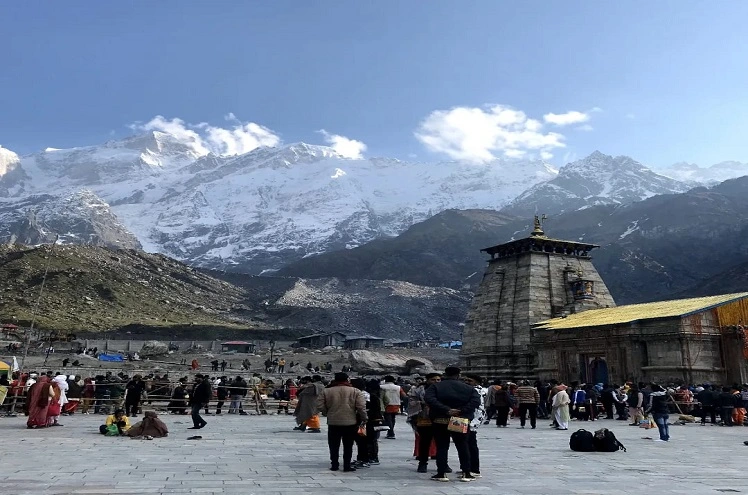
Kedarnath, which was named after the Hindu king Kedar, is a significant Hindu pilgrimage location. At 3,584 metres above sea level, the Kedarnath temple is surrounded by breathtaking snow-capped mountains and dense woods. It is located in the Rudraprayag area of Uttarakhand and is one of the most well-known Panch kedar temples. A Shiva lingam with a conical form, known as the hump of Shiva, is kept at the temple. Adi Shankaracharya is credited with founding the current temple, which was constructed of grey stone slabs, in the eighth or ninth century. Gaurikund is the closest motorable road to Kedarnath. Then, a 16-kilometre hike is required to get to the shrine. Even though the Kedarnath yatra involves a steep trek, it passes through beautiful scenery, which lifts travellers' spirits at all times. And thus, thousands of people go on the Kedarnath yatra every year. It is a popular belief that anyone who goes on the Kedarnath yatra and pays a visit to the holy shrine gets a place in heaven. You can even book a Kedarnath yatra package with Manchala Mushafir to make things easier for you.
Tunganath
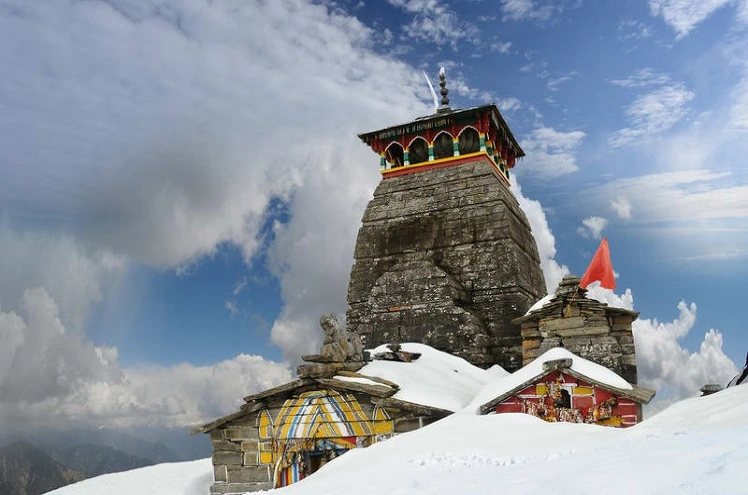
Tungnath Temple, the second temple of the Panch Kedar circuit, is located at an altitude of 3680 meters above sea level in the lap of the Himalayas. It is credited with being the highest Shiva temple on earth. It comes under the constituency of Rudraprayag district in Uttarakhand. Forelegs of Lord Shiva in the form of a bull have appeared at this place and are being worshipped. It is also believed that this is the same place where Lord Rama meditated to get rid of his sin of "Brahma Hatya." In addition to pilgrimage, Tungnath Temple is also famous as a trekking location. Some of the prominent peaks visible from this temple are Nanda Devi, Kedarnath, Choukhamba, and Neelkanth. Trekking trails to Tungnath Temple are very beautiful and pass through dense forest with beautiful rhododendrons welcoming you. The most famous Chandrashila Peak, or Moon Rock, is located at a distance of 1 km and is known for the spectacular 360-degree view of snow-capped mountains and deep valleys.
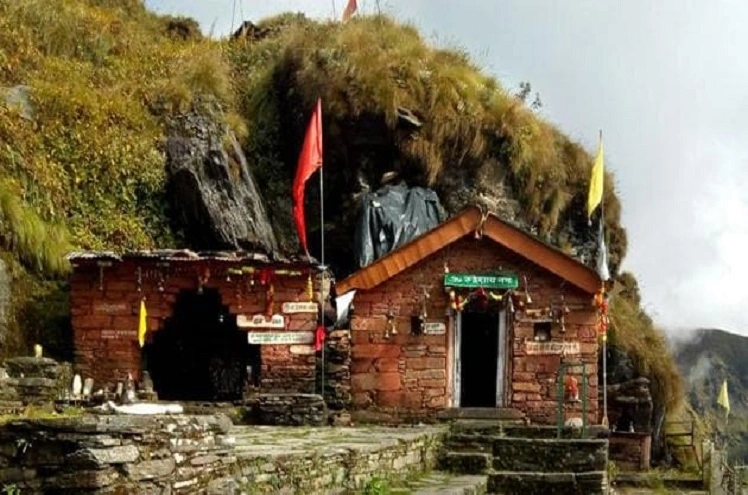
It is the spot where Shiva's face first rose above the earth. Shiva is worshipped as "Neelkanth Mahadev" at a natural rock temple that is located at a height of 2,286 metres among alpine meadows and dense forests of rhododendrons. Around the temple, there are several holy kunds (pools), including Surya Kund, Chandra Kund, Tara Kund, and Mana Kund. A stunning background is provided by the magnificent peaks of Nanda Devi, Nanda Ghunti, and Trishul. Compared to other Panch kedar temples, the trip required to get there is thought to be more difficult. The majority of the 20-kilometer treks that go to Rudranath begin at various locations in Gopeshwar (in the Chamoli district).
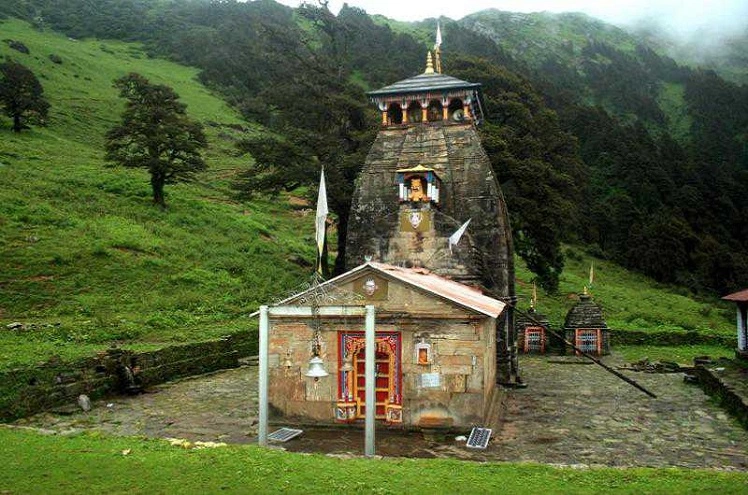
Madhyamaheswar, which is located at a height of roughly 3,289 metres, is thought to be the location where Shiva's middle or navel section first manifested. The temple is surrounded by the stunning snow-covered peaks of Kedarnath, Chaukhamba, and Neelkantha and is located in a lovely green valley in the Mansoona hamlet in the Garhwal Himalayas. Uniana, located about 18 kilometres from Ukhimath, is the starting point for a trek to Madhyamaheswar. The journey is around 19 km long and may be easily completed up to Bantoli (about 10 km from Uniana); beyond Bantoli, the slope gets steeper and more challenging.
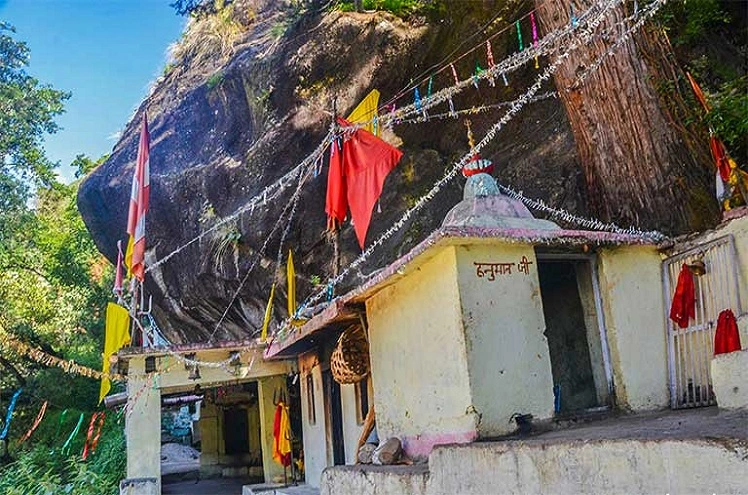
According to mythology, Lord Shiva's hair (jatas) emerged at the Kalpeshwar temple. Shiva is also known as Jatadhari or Jateshwar because of his long, unkempt hair. At a height of 2,200 metres, the temple of Kalpeshwar is situated in the serene and beautiful Urgam valley in the Chamoli district of Uttarakhand. The Urgam valley offers fascinating views of apple orchards and potato plantings on terraced fields, while being primarily covered in deep forest.
Kedarnath yatra is the most famous among all the five temples, as it is also a part of the Char dham Yatra and 12 jyotirlingas in India, which is quite famous among Hindus. You can also book a Kedarnath yatra package at best price.
Panch kedar FAQ'S
What are the five kedars?
Kedarnath, Tungnath, Madhmaheshwar, Rudranath and Kalpeshwar temples are collectively known as Panch kedar or five kedars. As per holy scriptures it is believed that after disappearing from Kedarnath, lord shiva appeared at five different location in the form of lingas. Temples at these five locations are known as five Kedars.
Which is the highest Panch kedar?
Located at an altitude of 12,106 feet above the sea level, Tungnath is considered to be the highest Panch kedar Temple. While Rudranath located at an altitude of 11,800 feet above the sea level is the second highest of panch kedar temples. Other temples like Madhmaheshwar is located at an altitude of 11473 feet, Kedarnath at 11755 feet and Kalpeshwar is at a height of 7217 feet.
Which Panch kedar to visit first?
There is no such fixed sequence of visit to panch kedar but it’s a common tradition to visit to Kedarnath temple first.




